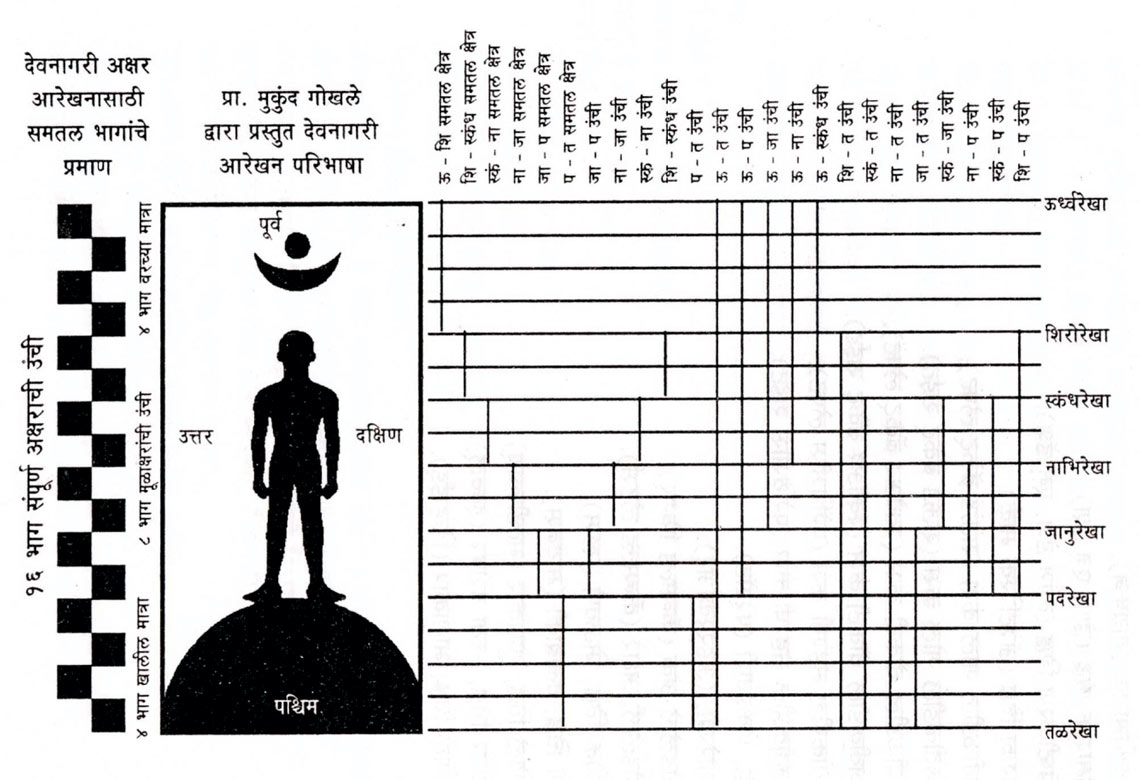Codepoint: U+0950 "DEVANAGARI OM"
Block: U+0900..097F "Devanagari"
Next, we come to our first Brahmic script: Devanagari. Devanagari is the most widely-used Brahmic script. Almost 50% of the Indian population use it to write their native language. It is a left-to-right abugida used to write dozens of languages.
It is sometimes glibly called a "washing line" script because, unlike Latin/Greek/Cyrillic scripts that "sit" on top of their baselines, Devanagari also "hangs" from a head line:
Devanagari script
देवनागरी लिपि
Devanagari typography is non-trivial, even when the letterforms are isolated:
 |
| Devanagari Type Anatomy [source] |
Of course, anthropomorphism in typography isn't limited to Brahmic scripts, but one can take "type anatomy" quite literally:
 |
| Design Parameters of Devanagari (Gokhale, 1983) [source] |
The flipside of grammatology is phonology.
"Om" is the sound of a sacred spiritual symbol in Indic religions. In Devanagari, in its simplest form, it is written:
ओम
U+0913 U+092E
However, there is also a ligatured codepoint in the Devanagari block named "DEVANAGARI OM":
ॐ
There are currently many Oms encoded into Unicode. The Devanagari Om was added right at the onset in Unicode 1.0 (1991). This incorporated a wholesale import of the ISCII (Indian Script Code for Information Interchange, 1988) character sets which encode Om as a multi-byte sequence (0xA1 0xE9). The Unicode Consortium allocated U+0950 "DEVANAGARI OM" to allow one-to-one mapping of ISCII on this basis. Of course, once you allow one Om through...

No comments:
Post a Comment